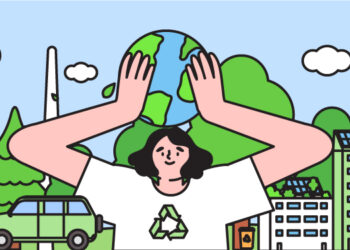When shopping for clothes, hotels, gifts, or any other service, if the company’s website is unappealing or hard to navigate, we usually shy away from making a purchase. In today’s digital age, having a stand-out website is essential. It can make or break a business. And the same goes for your department.
Yes, it is crucial to have outstanding facilities and innovative programming, but you also need a website that reflects the same high-standards. This is precisely why the University of Michigan Department of Recreational Sports underwent a website overhaul. “We wanted people to have a consistent experience with our brand, in that, when they come to the website they are seeing our images come to life with the look and feel of our other marketing materials,” said Mike Widen, the director of recreational sports at the University of Michigan. “We knew that we wanted the website to do the heavy lifting of conveying our brand and supporting all the other marketing efforts.”
The website was designed through a partnership between the Recreational Sports Marketing Team and the Student Life Auxiliary Marketing Team. As Widen explained, when re-designing the website, it was important to include those who are well-versed in website design as well as those who understand the mission of campus recreation. The project was a true team effort.
The department realized a website redesign was necessary after conducing analysis about the old side. “We did some intentional analysis of our old site to find out what was working and what wasn’t — from both a user perspective and internally,” explained Widen. “We conducted extensive interviews of internal and external audiences to develop the personas necessary to create a truly customer-centric website that could create a high-level of engagement and drive revenues. From there, we started building a framework to create what we wanted to site to be. We also spent a lot of time making sure that the web design team really understood our goals so that their work complimented how the recreational user experienced the site.”
Widen shares some of his key takeaways from the process.
Your website should be well organized and easy to navigate. “Better organization was a goal of the design. We wanted to create easy access to the information that is consistently accessed by our users. An example of this is our facility hours. We knew through our previous tracking data that facility hours was one of the most-accessed pieces of information. Therefore, we wanted to make that very easy to find on the site.”
Your website should convey the values of your department. “We were intentional about selecting activities, images and video where all people can see themselves in our facilities and programs. We wanted to convey our value of inclusion where everyone is welcome and invited to experience all Recreational Sports has to offer. Our website needed to show that no matter your ability level, your age, your level of fitness, or your expertise, all are welcome at Recreational Sports.”
Use your website to help drive revenue. “Our success as a department is dependent upon our ability to create and grow our own revenue streams. We needed a site that made it easy for users to make purchases (memberships, group exercise passes, adventure trips, etc.) The website design was created to have the ability to connect with our Fusion membership management program to make sales, which will be coming to fruition this summer.”
Get creative. “Because our work is based on physical activity, it is important for us to show how engagement and interaction is happening in our spaces and our programs. A major component of our site is the use of videos that show what people can truly be experiencing in our programs and facility, short of being here in person. We wanted the visitors of the site to see the activity going on and think, ‘If they can do it, I can do it.’”
Keep your website up-to-date. “The website should be a destination point that is both functional and enjoyable for those who visit. It needs to have consistent information and needs to have the most updated information. Nothing is more frustrating for a user when the website doesn’t have the correct and updated information. A consistent pattern of that will deter the user from coming back to your site.”
Don’t rush the development process. “Expect the process of development to take some time. It is more important to get the site right, than to get it done quickly. Continue to collaborate through the process, not just on the front-end, with everyone involved. Determine what is truly important for the user to know and focus on that information. Sometimes recreation professionals have a desire to post anything and everything that is related to our programs and facilities. We decided to reduce the information posted to only the most critical pieces the users are looking for. In the case of building our website, we thought less can be more.”










